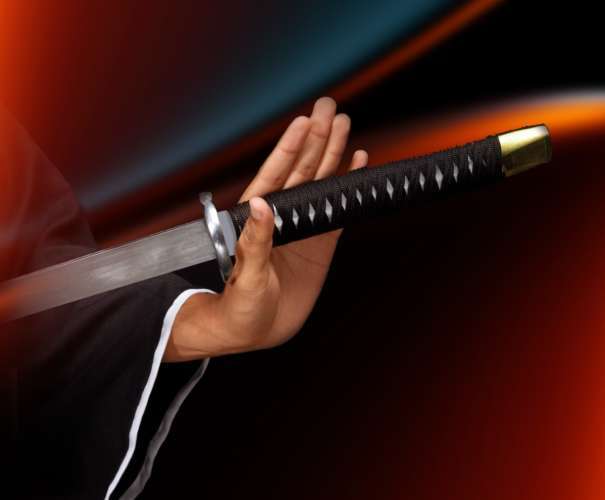Menu
Swords have long been an emblem of power, honor, and skill. The world of swordplay is diverse and fascinating, spanning continents and centuries. In this exploration, we delve into the intricate world of different sword styles, uncovering the unique attributes that define each blade.
Understanding the various types of sword styles is essential for any enthusiast. Swords can be categorized based on design, functionality, and cultural context. Whether you’re a history buff or a martial arts practitioner, grasping these nuances adds a layer of appreciation for the art of the blade.

The katana is an iconic Japanese sword known for its curved blade and exceptional sharpness. It symbolizes the pinnacle of Japanese craftsmanship and is often associated with the samurai warrior class.

These are shorter blades with unique characteristics. The wakizashi is traditionally paired with the katana, while the tanto is a small dagger often used for close-quarters combat.

Iaido focuses on drawing and striking with the sword in a single, swift motion. Kenjutsu is a broader term encompassing various traditional Japanese swordsmanship techniques, emphasizing both offensive and defensive movements.

These are less common but impactful styles. The nodachi is a large two-handed sword, and the naginata is a polearm with a curved blade on the end, often wielded by Japanese women for self-defense.

Broadswords are large, two-edged blades associated with medieval knights. Longswords, popular during the Renaissance, are versatile weapons with longer grips, allowing for both one and two-handed use.
Rapiers are slender, pointed swords primarily used for thrusting, while cutlasses are short, curved blades ideal for close-quarters combat. Each style served a specific purpose in European history.
As armor became less prevalent on the battlefield, swords evolved into lighter, more agile dueling weapons. This transition marked a shift in European sword design and usage.

Known for their elegant curved design, scimitars are prominent in Middle Eastern cultures. They have historical significance in battles and are often associated with regional warriors.

Variations in Middle Eastern sword design, with the saif being a straighter sword and the kilij having a more pronounced curve. Both have distinctive features and were used in different contexts.

A symbolic sword associated with Islamic history, characterized by its unique bifurcated blade. It holds cultural and religious significance and is often depicted in Islamic art.
The Jian is a straight, double-edged sword, while the Dao is a single-edged saber. Both are integral to Chinese martial arts and emphasize fluid, circular movements.
The guandao is a polearm with a wide blade, while the hook sword has a crescent-shaped blade with a hooked tip. These unique weapons showcase the diversity of Chinese martial arts.
Chinese swordsmanship often integrates principles from internal martial arts, such as Tai Chi and Baguazhang. Practitioners focus not only on physical techniques but also on cultivating internal energy and balance.
The kukri is a curved knife from Nepal, known for its versatility. The kris is a distinctive dagger from Southeast Asia, featuring a wavy blade with cultural and ceremonial significance.
Lesser-known but impactful styles, the makraka is a unique sword from Thailand, while the shamshir is a curved blade from Persia. Each style reflects the cultural diversity of their respective regions.
Across the African continent, diverse tribal swords showcase a wide range of designs and uses. From the Ethiopian shotel to the Zulu ikwla, these swords are deeply rooted in cultural traditions.

Mastering a sword style goes beyond physical prowess; it transforms into an art form. The discipline, focus, and dedication required to become a skilled swordsman are akin to a painter perfecting a masterpiece. Swordplay becomes a dance, a symphony of movements and techniques that mesmerize both the practitioner and the audience.
Sparring and Live Practice: To truly grasp the art of swordplay, engaging in sparring and live practice is essential. This hands-on experience allows practitioners to apply their skills, refine techniques, and develop a deeper understanding of their chosen sword style.
The world of different sword styles is a captivating journey through history and culture. Each style tells a story, carrying the legacy of warriors and civilizations. As we appreciate the diversity of these blades, let us be inspired to explore and embrace the art of swordplay in all its forms.
While each style has its complexities, the difficulty often depends on an individual’s dedication and training.
While it’s possible to start learning on your own, having a qualified instructor is highly recommended for proper guidance and safety.
Yes, many martial artists incorporate traditional techniques into modern swordplay, creating a dynamic blend of old and new.
The katana, with its association with samurai culture, is often considered one of the most iconic and recognizable sword styles.
While physical strength is essential, technique, precision, and mental focus play equally crucial roles in mastering swordplay.
We offer the largest selection of handmade Japanese swords with full customization options to personalize and amplify your experience when buying a Katana sword or any other Samurai swords for sale on our website.
Copyright 2023 katanaswords.shop. All Rights Reserved.